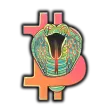ChainOpera AI (COAI) has emerged as one of the most volatile and talked-about projects in the crypto space, with the token experiencing dramatic price swings and rapid accumulation of developer interest. As the cryptocurrency market continues to absorb AI-focused narratives, this decentralized AI agent platform is attracting both bullish speculators and cautious skeptics. The key question investors face: is COAI a legitimate next-generation infrastructure play, or another speculative pump destined to disappoint?

This comprehensive ChainOpera AI review breaks down the project’s core technology, tokenomics, recent price action, and critical risk factors to help you make an informed decision.
Quick TL;DR:
- COAI token powers a decentralized platform for AI agents and developer tools — a real project with a published roadmap.
- Extreme volatility and wallet concentration present significant risks alongside genuine upside potential.
- Investors should verify official channels, avoid impersonation scams, and conduct thorough due diligence before committing capital.
What is ChainOpera AI? (Overview)

ChainOpera AI positions itself as a decentralized AI agent developer platform designed to enable autonomous AI systems to operate, transact, and coordinate on-chain. Unlike centralized AI services, ChainOpera aims to give developers a permissionless toolkit to build and deploy AI agents that can manage finances, automate workflows, and participate in decentralized marketplaces.
At its core, the platform combines three elements:
- AI Agent Framework — A development environment for creating autonomous agents with decision-making capabilities.
- Agent Marketplace — A peer-to-peer ecosystem where AI agents can be rented, leased, or composed into more complex systems.
- Token Economics — COAI serves as the native utility token for gas fees, staking, governance, and agent payments.
The project’s whitepaper outlines a vision of “programmable intelligence” where developers don’t need to rely on centralized cloud providers to run sophisticated AI systems. Instead, they deploy agents to the ChainOpera network and pay fees in COAI tokens. This narrative aligns with broader 2025 trends around AI tokenization and blockchain-based compute markets.
Whitepaper & Roadmap Highlights
ChainOpera’s roadmap specifies key milestones including the launch of an agent marketplace (Q1–Q2 2025), integration with major blockchain ecosystems, and the introduction of advanced launchpad features for new AI agent creators. The team has published a formal whitepaper detailing token economics, governance structures, and protocol upgrades planned through 2026.
Early milestones suggest a functional product is being built, though execution risk remains high for any emerging infrastructure project. Developers considering the platform should monitor official channels for progress updates and verified roadmap achievements.
COAI Tokenomics & Utility
Understanding COAI tokenomics is crucial for evaluating whether the token has genuine utility or is primarily a speculative asset.
Token Supply & Distribution
The COAI token operates on a fixed or semi-fixed supply model (specifics vary by chain deployment). Key distribution tiers typically include:
- Team & Advisors — Subject to multi-year vesting schedules to reduce immediate sell pressure.
- Community Airdrops & Rewards — Distributed to early adopters and developers.
- Strategic Investors — Early-stage and Series rounds with negotiated unlock schedules.
- Treasury Reserve — Held by the project for operations, incentives, and ecosystem development.
Vesting schedules matter enormously. If large allocations unlock simultaneously, sudden selling pressure can crater prices. Conversely, well-structured vesting (12–36 months with cliffs) protects token value and signals team confidence in long-term viability.
Token Utility & Use Cases
COAI holders and network participants use the token for:
- Gas & Transaction Fees — Payments for executing AI agent operations on-chain.
- Staking — Validators and node operators stake COAI to earn protocol rewards and voting rights.
- Agent Payments — Developers compensate AI agents in COAI for services rendered (e.g., data provision, liquidity provision).
- Governance — Token holders vote on protocol upgrades, treasury allocation, and ecosystem initiatives.
Legitimate utility creates genuine demand; if COAI is primarily used for speculation rather than actual agent operations, its long-term value proposition weakens significantly.
Centralization Risks & Wallet Concentration
On-chain analysis services have flagged potential wallet concentration concerns with COAI. A small number of addresses controlling a large percentage of the circulating supply creates risk: large holders can dump tokens rapidly, destabilizing price, or coordinate to manipulate markets.
Watch for red flags such as:
- A single address or wallet cluster holding >20–30% of circulating supply.
- Rapid accumulation by known whale addresses without corresponding platform adoption metrics.
- Lack of transparency from the team regarding large holder identities or intentions.
Verify wallet distribution via blockchain explorers and on-chain analysis tools. Ask the project directly about holder concentration and their mitigation strategies.
Airdrop & Scam Warnings
Critical Warning: Multiple impersonation scams have circulated claiming to offer COAI airdrops. These fake campaigns typically ask users to “verify wallets,” “connect MetaMask,” or complete suspicious surveys—all classic phishing tactics. Many victims have lost funds or had wallets drained.
How to stay safe:
- Only access COAI from the official website (verify the domain matches exactly).
- Never click airdrop links from unsolicited messages or unverified social media accounts.
- Check official ChainOpera Discord, Twitter, and Telegram for legitimate airdrop announcements.
- Use blockchain explorers to verify airdrop contract addresses before interacting.
- If you’ve already connected a wallet to a suspect page, immediately move funds to a new secure wallet.
Report scams to security platforms like PCRisk or directly to the ChainOpera team.
Market Performance & Recent Price Action
COAI’s price history reveals the hallmarks of a speculative, volatile asset.
Price Timeline & Volatility
The token saw a rapid presale phase, followed by exchange listings that sparked a sharp rally. Within weeks, COAI climbed to all-time highs driven by AI market hype and aggressive retail buying. Shortly thereafter, the token experienced a severe drawdown—a pattern consistent with pump-and-dump dynamics or overextended retail enthusiasm.
Recent bounces have rekindled interest, with some analysts calling for a retest of previous highs. However, each rally faces selling pressure from early holders and profit-takers, creating a volatile chop that rewards active traders but punishes buy-and-hold retail investors caught on the wrong side of swings.
Key observations:
- 30–90 day volatility often exceeds 40–60% (annualized, well above Bitcoin or Ethereum).
- On-chain liquidity is concentrated on a handful of exchanges, increasing slippage and manipulation risk.
- Whale wallets show irregular deposit/withdrawal patterns into major exchanges, suggesting coordinated moves.
On-Chain Indicators & Sentiment
Bullish signals include rising developer activity on GitHub, increasing smart contract interactions, and steady inflows to staking contracts. Bearish signals include prolonged exchange outflows (indicating lack of buying interest), declining transaction volume, and consolidation below key moving averages.
No single indicator is decisive; interpret them together and cross-reference with news and fundamental developments.
Price Prediction & Analyst Sentiment
Bullish voices point to the large AI token market (tokens like FET, NEAR, and INJ commanding multi-billion dollar valuations) and argue COAI could capture similar market share if product adoption accelerates. Some analysts target 2–5x upside from current levels over 12–24 months.
Skeptical analysts counter that execution risk is extreme—the platform must actually see meaningful adoption to justify token value, and most AI agent infrastructure projects have struggled to convert hype into users. They warn of further 50–70% drawdowns if growth disappoints.
Balanced perspective: Price predictions are speculative. Past performance and analyst calls do not guarantee future results. Position sizing and risk management are essential.
Technology & Use Cases
How AI Agents Work on ChainOpera
The platform enables developers to deploy autonomous AI agents that can:
- Monitor on-chain data and respond to market conditions (e.g., automated trading agents).
- Execute transactions autonomously (with human-set parameters and safeguards).
- Collaborate with other agents to solve complex problems (e.g., multi-step financial workflows).
- Earn and spend COAI as they provide services to other users or agents.
This differs from traditional SaaS because agents operate in a decentralized, trustless environment where no single entity controls execution or can censor agents.
Real-World Use Cases
DeFi Automation: A developer deploys an AI agent that monitors liquidity pools, automatically rebalances positions, and captures yield. The agent is paid in COAI by users who hire its services.
Data Marketplaces: An AI agent aggregates proprietary market data and sells insights to traders. Revenue is split between the agent creator and the platform (both paid in COAI).
Enterprise Workflows: Corporations integrate ChainOpera agents to automate cross-chain settlements, invoice processing, or supply chain verification without relying on a single vendor.
Developer Experience
The project emphasizes ease-of-use: developers can write agents in popular languages, deploy with one command, and monetize through the marketplace. If the UX is genuinely simple compared to competitors, adoption could accelerate.
However, the platform remains early-stage; developer documentation, SDKs, and tooling are still maturing, which creates friction for adoption.
Risks & Red Flags
Wallet Concentration & Centralization
If a small cohort of addresses controls the majority of COAI supply, the network is centralized in practice, even if the code is decentralized. This enables market manipulation and undermines the project’s decentralization narrative.
Scams, Airdrops & Impersonation
Beyond wallet draining, scammers create fake exchanges, clone websites, and post misleading videos. Staying vigilant is non-negotiable.
Extreme Volatility & Pump-and-Dump Patterns
Rapid 50%+ swings in either direction create outsized risk for average investors. Early investors and insiders often exit during price spikes, leaving latecomers exposed to collapses. This pattern is common in low-liquidity tokens with small market caps.
Execution Risk
Many infrastructure projects fail to gain meaningful adoption. If ChainOpera AI cannot attract developers, agents, or users, the token’s utility evaporates and speculative interest fades.
Market Saturation
The AI token space is crowded. Competitors like Fetch.ai (FET), Singularity Net (AGIX), and others are already established. ChainOpera must differentiate significantly to capture market share.
Verdict: Who Should Consider COAI?
Best Suited For:
Developers & Researchers — Those building AI applications may benefit from hands-on exploration of the platform. Early builders often receive grants, staking rewards, or other incentives.
Active Traders — The volatility presents opportunities for disciplined traders who can read on-chain signals and manage risk tightly.
Long-term Infrastructure Believers — Investors convinced that decentralized AI agents will become essential infrastructure might hold COAI as a multi-year conviction bet, prepared for 50–80% drawdowns.
Not Recommended For:
- Risk-averse investors seeking stable returns.
- Passive HODLers without conviction in the fundamental thesis.
- Beginners unfamiliar with volatile assets and proper position sizing.
Action Items:
- Read the whitepaper and roadmap; assess whether the vision resonates with your investment thesis.
- Verify official links before engaging with the project; bookmark the real website and social accounts.
- Conduct on-chain analysis; check wallet distribution, transaction volume, and whale activity yourself.
- Size positions conservatively; risk only capital you can afford to lose entirely.
- Diversify; COAI should represent a small portion of a diversified crypto portfolio, not a concentrated bet.
Frequently Asked Questions (FAQ)
Is COAI listed on major exchanges? COAI is available on several exchanges including Bitget, Phemex, and others. Always verify listings via CoinGecko or official project sources; fake exchange pages exist.
Is ChainOpera AI a scam? The project has a published whitepaper, roadmap, and active development team. However, no guarantee of success exists, and execution risk is high. Scams impersonating the project do circulate—verify official channels carefully.
How do I buy COAI token safely? Use reputable exchanges (Bitget, Phemex), enable two-factor authentication, and send only small test amounts first. Never click suspicious links or enter private keys anywhere.
What is the COAI airdrop? Official airdrops are announced via the project’s verified Twitter, Discord, and website. Avoid unsolicited airdrop messages, which are typically scams.
How is ChainOpera AI different from other AI tokens? ChainOpera focuses specifically on on-chain AI agents and developer infrastructure. Competitors like Fetch.ai emphasize different aspects (e.g., service markets vs. agent frameworks). Research each project’s specific positioning.
Should I stake COAI? Staking can yield rewards but locks capital and exposes you to continued price risk. Evaluate staking APY, lock-up periods, and your conviction level before committing.
Closing & Resources
ChainOpera AI represents an intriguing but high-risk bet on decentralized AI infrastructure. The project has genuine technical vision and published roadmaps, but execution risk is substantial. Extreme volatility, wallet concentration concerns, and scam activity add friction to the investment thesis.
If you decide to engage with COAI:
- Whitepaper & Roadmap: Official ChainOpera Docs
- Verified Exchanges: Bitget, Phemex
- Official Social: Verify Twitter handle and Discord via the whitepaper.
- Scam Reporting: Report impersonation schemes to PCRisk and security platforms.
Remember: always conduct your own research, verify official channels, and never invest more than you can afford to lose. The crypto space rewards diligence and punishes carelessness.
Do your own research (DYOR), stay skeptical, and position accordingly.

